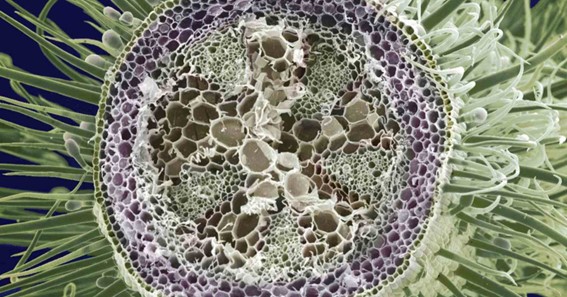Are you curious to know what is complex tissue? You have come to the right place as I am going to tell you everything about complex tissue in a very simple explanation. Without further discussion let’s begin to know what is complex tissue?
The intricate world of plant anatomy unveils a fascinating array of structures that enable plants to thrive, grow, and adapt to their environments. Among these structures, “Complex Tissue” stands out as a remarkable example of nature’s sophistication. Comprising multiple types of cells with specialized functions, complex tissue plays a vital role in the growth, support, and transport systems of plants. In this blog, we will delve into the concept of complex tissue, its components, functions, and its significance in the realm of plant biology.
What Is Complex Tissue?
Complex tissue refers to a type of plant tissue that is composed of two or more different types of cells, each with distinct functions. These cells work together harmoniously to perform specific tasks critical to the plant’s survival and growth. Complex tissue is primarily found in higher plants, such as angiosperms and gymnosperms, and is responsible for various physiological processes.
Key Types Of Complex Tissue
- Xylem: Xylem is a type of complex tissue responsible for the transport of water, minerals, and nutrients from the roots to other parts of the plant. It consists of vessel elements and tracheids, which are specialized cells adapted for efficient water conduction.
- Phloem: Phloem is another vital complex tissue involved in the transport of organic compounds, such as sugars, produced during photosynthesis. It contains sieve tube elements and companion cells, which work in tandem to facilitate nutrient distribution.
Functions Of Complex Tissue
- Transport: The primary function of complex tissue is to facilitate the transport of water, nutrients, and organic substances throughout the plant. Xylem carries water and minerals from the roots to the leaves, while phloem transports sugars and other organic compounds.
- Support: Complex tissue provides structural support to the plant, helping it withstand external forces, such as wind and gravity. Xylem cells contribute to the plant’s rigidity and mechanical strength.
- Storage: Some complex tissues can store nutrients, starch, and other essential compounds that the plant may need during periods of growth, flowering, or fruiting.
- Nutrient Exchange: Complex tissue enables the exchange of nutrients and signals between different parts of the plant, ensuring coordinated growth and responses to environmental changes.
Significance Of Complex Tissue
- Plant Adaptation: Complex tissue allows plants to adapt to varying environmental conditions by efficiently transporting water and nutrients to where they are needed most.
- Growth and Development: The functions of complex tissue contribute to the overall growth, development, and health of the plant.
- Ecological Balance: Complex tissue plays a role in maintaining the ecological balance by facilitating nutrient cycling and supporting plant communities.
- Scientific Research: The study of complex tissue provides insights into plant anatomy, physiology, and evolution, contributing to advancements in agriculture, forestry, and biotechnology.
Conclusion
Complex tissue showcases the remarkable intricacy of plant biology, underscoring the elegance and efficiency of nature’s designs. As complex tissue carries out its crucial roles in transporting, supporting, and sustaining plant life, it invites us to marvel at the wonders of the natural world. Whether we admire the growth of towering trees or the delicate petals of a flower, we are witnessing the harmonious collaboration of complex tissue at work, enabling plants to flourish and contribute to the beauty and diversity of our planet.
FAQ
What Is Complex Tissue With Example?
The tissues which consist of more than one kind of cell or are formed from different types of cells, and coordinate together to perform a single desired function are known as Complex tissues. Examples of complex tissues include xylem and phloem that helps in the transport of water and food respectively.
What Is Complex Tissue And Its Function?
The complex tissue present in xylem and phloem is vascular tissue. It is a conducting tissue. Its main function is to conduct or transport fluid and nutrients from one part to another part in plant.
What Are The Types Of Complex Tissue?
Two types of complex tissues in plants are xylem and phloem.
What Is Simple And Complex Tissue?
If the tissues are composed of cells which are functionally and structurally similar, then they are called Simple tissues. If the tissues are composed of more than one type of cell, and they work together as a unit, performing many functions, then they are called Complex tissues.
I Have Covered All The Following Queries And Topics In The Above Article
What Is Complex Permanent Tissue
What Is Complex Tissue
What Is Complex Tissue Class 9
What Is The Difference Between Simple And Complex Tissue
What Is Complex Permanent Tissue Class 9
What Is Complex Tissue Name The Various Kinds Of Complex Tissue
What Is The Difference Between Simple Tissue And Complex Tissue
What Is The Complex Tissue
What Is Simple And Complex Tissue
What Is Simple Tissue And Complex Tissue
What Is Complex Tissue In Plants
What Is Complex Tissue
What are complex tissues?
Which tissue is made up of structurally different types of cells?
